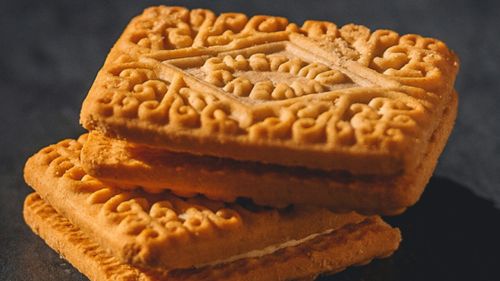

You might already know how Bourbons got their name or the surprisingly medical early marketing of Digestives.
But fellow Custard Creams fans probably never thought twice about the pattern that adorns our beloved biccies.
The biscuits, which have been around since either 1908 or 1913 (depending on who you ask), contain custard powder in place of eggs.
That’s because their inventor’s wife was allergic to eggs (aww).
We recognise them by their signature stamped top layer ― but according to the Manchester Museum, there’s more to the motif than first meets the eye.
What do the patterns mean?
“Between the 1840s and the 1890s in the UK, there was a craze that was bigger than Pokemon cards,” a staff member named Bryony revealed on TikTok.
This was the “fern madness,” or “pteridomania.”
It partly came about as a result of trains and railways, which gave people from cities access to remote parts of the country that would have been a right pain to reach otherwise.
Those mini breaks became “fashionable, and so people would try and find things that were in those remote, cold places ― things like ferns.”
“It became a symbol of friendship, of good times, and of intelligence, of course,” Bryony shared.
The pattern on Custard Creams reflects this. They’re some “ferns unfurling,” she adds.
Food historian Lizzie Collingham agrees, telling the BBC: “Ferns were very fashionable in Victorian England.
“People would have little glass cases and grow ferns in them, sometimes in the shape of churches. It was a terribly fashionable pastime for ladies.”
Weren’t Custard Creams a bit late for that?
The BBC notes that the launch of Custard Creams occurred decades after the Victorian era, though experts agree its design reflects the pteridomania of years gone by.
It reminds me of Quality Street ― a 1963 product that referenced a 1901 JM Barrie play of the same name, which was itself set in Edwardian times.
“The design and branding of Quality Street was meant to evoke feelings of nostalgia for old fashioned ways and sentimental romantic imagery,” the Calderdale Museum says.
Collingham told the BBC that at the time of manufacture, it was “seen as a modern, exciting thing to make a food.
“Biscuits were the first industrial food, the first food stuff to be produced by a machine; from mixing, kneading, rolling out, cutting out, baking, it could all be done with minimal intervention from people.”
Custard Creams, which used then-new fangled custard powder, were seen as even more modern; “To put custard powder in a biscuit… it brought together two things which represented industrial progress.”
Perhaps the fern-based throwback makes more sense in that context...